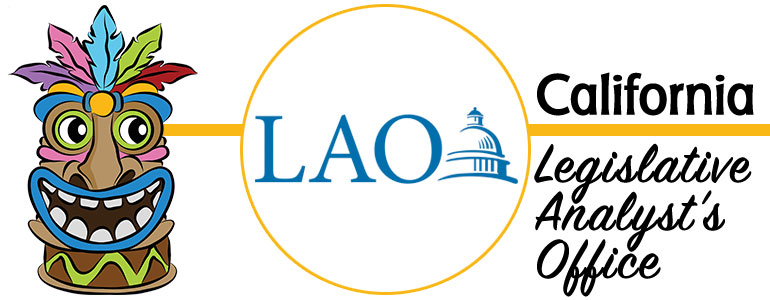
The Legislative Analyst’s Office has just published the following report:
Improving California’s Unemployment Insurance Program
The Legislative Analyst’s Office has just released a report, Improving California’s Unemployment Insurance Program. The report traces recent failures back to the program’s basic design, which encourages the state and the Employment Development Department to place more emphasis on limiting fraud and business costs than getting payments to eligible unemployed workers quickly and easily. Although these problems are not new, the pandemic has highlighted the need to rebalance the state’s Unemployment Insurance (UI) program. The report includes about a dozen targeted changes to rebalance the UI program so getting payments to workers is a top priority.
Executive Summary
California’s Unemployment Insurance (UI) program provides temporary wage replacement to unemployed workers. The program helps alleviate workers’ economic challenges and bolster the state economy during downturns. Despite its importance, the program faltered during the two most recent downturns. At the Employment Development Department (EDD)—which oversees UI—payments were delayed for roughly 5 million workers during the pandemic and phone lines were overwhelmed by frustrated callers. These failures caused hardship for unemployed workers and their families, held back the economy, and spurred frustration among Californians with their state government.
Recent Failures Trace Back to UI Program’s Basic Design. Recent failures can be traced back to the UI program’s basic design, which results in more emphasis being placed on minimizing fraud and business costs than making sure eligible workers can easily get benefits. Without safeguards to make sure eligible workers can get benefits easily, the state’s UI program has tilted out of balance. During normal economic times, this emphasis leads to unneeded complexity. During downturns, EDD’s policies and practices cause long delays and frustration for unemployed workers.
Program’s Basic Design Encourages EDD to Focus on Fraud and Containing Costs. Three key features of the program’s basic design have encouraged the state to adopt policies that make getting benefits difficult. First, the state operates the UI program with an orientation toward businesses (as the entities financing the program), which have a clear incentive to contain costs. Policies formed under this orientation tend to emphasize holding down business costs. Second, pressure from the federal oversight agency to avoid errors encourages the state to conduct lengthy reviews. These steps probably catch some mistakes, but make getting benefits challenging and time‑consuming for everyone else. Finally, to keep the program solvent, the state may look for ways to contain UI costs. The state UI trust fund does not build large enough reserves during normal times to weather downturns. Without legislative action to address this imbalance, the department may feel pressure to prevent the fund from becoming insolvent.
Signs of Imbalance in the UI Program. In this report, we highlight five key signs of the state’s imbalanced UI program. First, the department improperly denies many UI applications. More than half of EDD denials are overturned on appeal, while less than one‑quarter are overturned in the rest of the country. Second, UI claims are regularly delayed by weeks and often months, especially during downturns. Third, the administration’s assessment—conducted during the height of the pandemic—laid out how difficult the UI program is for workers. Fourth, we catalog state rules and application steps that make it unreasonably difficult for workers to prove eligibility and time‑consuming to apply for benefits. Finally, we highlight several concerning steps taken by EDD in recent years that suggest that ensuring eligible workers get benefits is not among its top priorities.
Improving the UI Program. Although these problems are not new, the pandemic has highlighted the need for the state to rebalance the UI program to make getting benefits to eligible workers a top priority. In our assessment, today’s problems do not call for fundamental reforms that could upend longstanding tenants of the state’s labor market. Instead, targeted changes to state practices could improve the experience unemployed workers have when they need UI. In this report, we suggest more than a dozen targeted changes to the state’s UI program to place greater priority on getting payments to eligible workers.
This report is available using the following link: https://lao.ca.gov/Publications/Report/4615?utm_source=laowww&utm_medium=email&utm_campaign=4615
